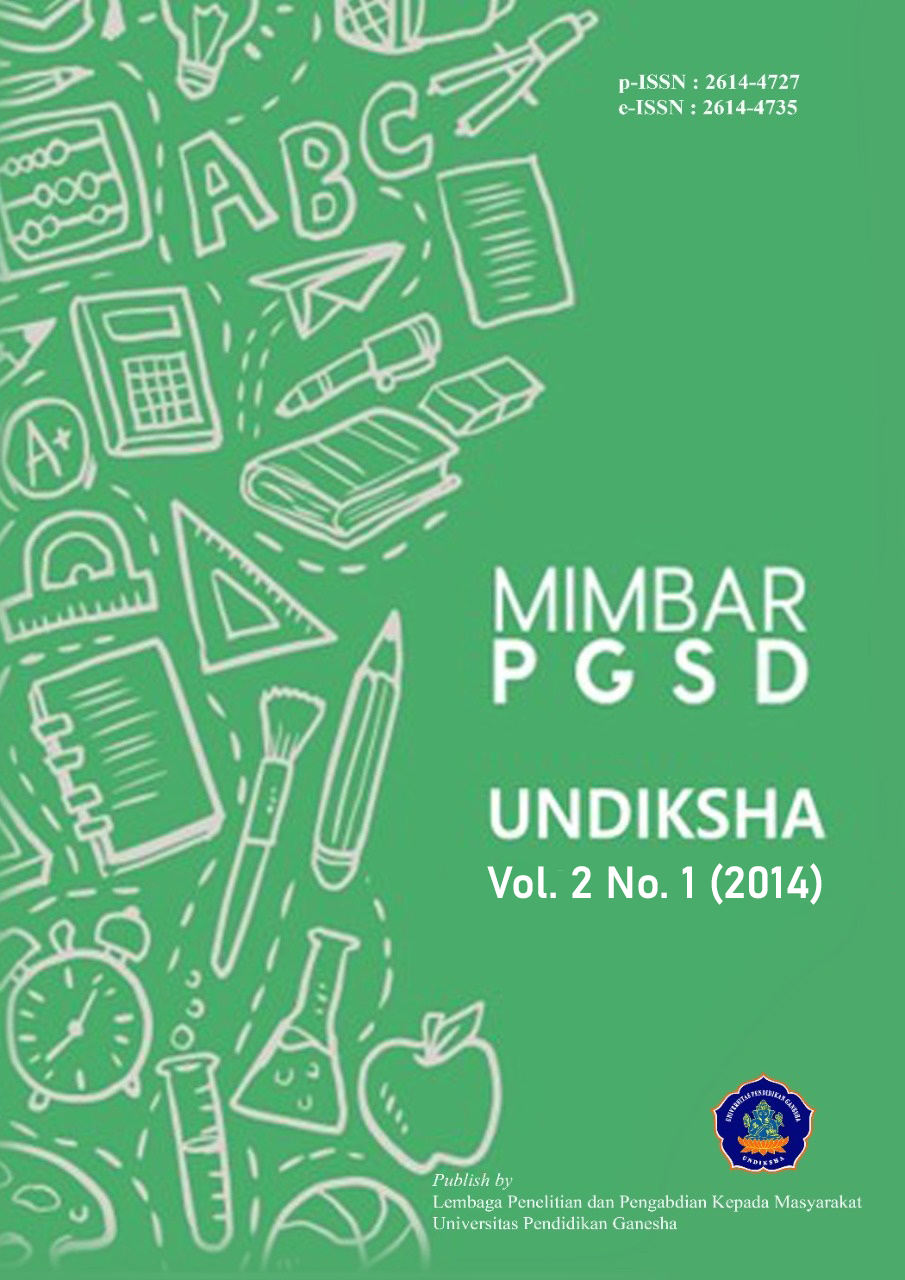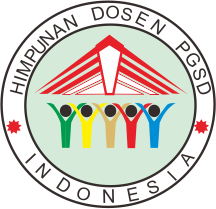PENGARUH MODEL PEMBELAJARAN TGT DENGAN BANTUAN MEDIA AUDIO VISUAL TERHADAP HASIL BELAJAR IPA
DOI:
https://doi.org/10.23887/jjpgsd.v2i1.2449Abstract
Penelitian ini bertujuan untuk mengetahui perbedaan hasil belajar IPA antara kelas yang menerapkan model pembelajaran TGT dengan bantuan media audio visual dan kelas yang menerapkan model pembelajaran konvenional. Penelitian ini merupakan penelitian eksperimen semu dengan rancangan post test only with non equivalent control group design. Populasi dalam penelitian ini adalah seluruh siswa kelas V SD Gugus III Kecamtan Buleleng, Kabupaten Buleleng yang berjumlah 129 siswa. Sampel dalam penelitian ini terdiri dari 74 siswa. Sampel penelitian ditentukan dengan tehnik simple random sampling dengan cara undian. Pengumpulan data dengan menggunakan tes hasil belajar dengan soal pilihan ganda yang berjumlah 30 butir. Data dianalisis menggunakan statistik deskriptif dan statistisk inferensial yaitu uji-t. Hasil penelitian menunjukkan bahwa terdapat perbedaan hasil belajar IPA antara kelas yang menerapkan model pembelajaran TGT dengan bantuan media audio visual dan kelas yang menerapkan model pembelajaran konvenional (thitung = 6,989 ; ttabel = 1,666). Rata – rata hasil belajar IPA dengan model pembelajaran TGT dengan bantuan media audio visual adalah 78.4 yang berada pada kriteria sangat tinggi. Sedangkan kelas yang belajar dengan model pembelajaran konvensional adalah 57,3 yang berada pada kriteria sedang. Jadi model pembelajaran TGT dengan bantuan media audio visual berpengaruh terhadap hasil belajar siswa dalam pembelajaran IPA.Kata Kunci : TGT, Media Audio Visual, Hasil Belajar
This research was aimed in knowing the differences of the students’ scores of Science class between the students, who were taught by using TGT with audio visual aids and the students, who were taught by using conventional teaching model. This research was a quasi experimental research with post test only with non equivalent control group design. The population of this research was all of the fifth grade students of elementary Cluster III of Buleleng District, Buleleng Regency. The number of the population were 129 students. The samples of this study were 74 students. The samples of the study were determined by using simple random technique. The samples were choosen by using lottery. The data colection was done by using 30 mutiple-choice tests. The descriptive statistic and inferensial statistic a t-score was used in the data analysis. The result of the study showed that there was a significant diference of the Science scores of the students between the students, who were taught by using TGT with audio visual aids and the students, who were taught by using conventional teaching model (counted = 6,989 ; table = 1,666). The average score of the students, who were taught by using TGT with audio visual aids, was 78.4. This average score is in high criteria. Meanwhile, the average score of the students, who were taught by using conventional teaching method, was 57.3. This average score is in moderate criteria. Therefore, TGT with audio visual aids teaching method influenced the students’ score in Science class.
keyword : TGT, Audio Visual Media, Learning Results.
Published
2014-02-27
How to Cite
., D. B. P. D. A., ., I. N. A. M., & ., I. G. M. S. M. (2014). PENGARUH MODEL PEMBELAJARAN TGT DENGAN BANTUAN MEDIA AUDIO VISUAL TERHADAP HASIL BELAJAR IPA . MIMBAR PGSD Undiksha, 2(1). https://doi.org/10.23887/jjpgsd.v2i1.2449
Issue
Section
Articles
License
Authors who publish with the Mimbar PGSD Undiksha agree to the following terms:
- Authors retain copyright and grant the journal the right of first publication with the work simultaneously licensed under a Creative Commons Attribution License (CC BY-SA 4.0) that allows others to share the work with an acknowledgment of the work's authorship and initial publication in this journal.
- Authors are able to enter into separate, additional contractual arrangements for the non-exclusive distribution of the journal's published version of the work (e.g., post it to an institutional repository or publish it in a book), with an acknowledgment of its initial publication in this journal.
- Authors are permitted and encouraged to post their work online (e.g., in institutional repositories or on their website) prior to and during the submission process, as it can lead to productive exchanges, as well as earlier and greater citation of published work. (See The Effect of Open Access)













